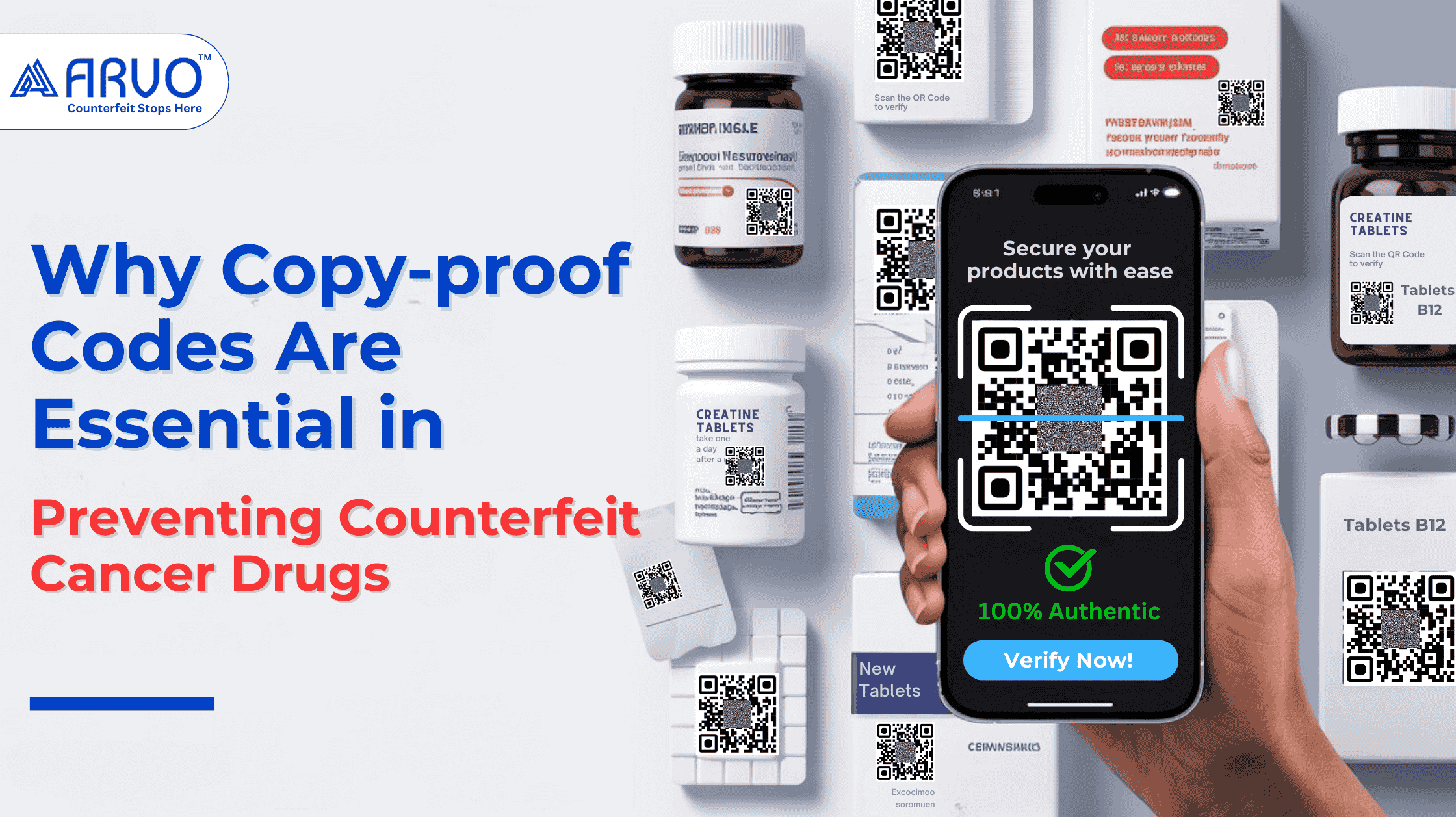
Counterfeit cancer drugs have become a significant concern, particularly in India, where nearly 35% of the world’s fake medicines originate. The impact is severe, as these counterfeit drugs can lead to treatment failure, serious health complications, or even death. To address this, the Indian government has mandated the implementation of QR codes on pharmaceutical packaging for over 300 drug brands, including well-known medications like Dolo and Calpol. But is this step enough to combat the counterfeit problem effectively?
The Problem: Counterfeit Cancer Drugs in India
Counterfeit drugs pose a severe threat, especially for life-saving treatments like cancer medications. Consider the following facts:
- 1 in 10 medical products in low- and middle-income countries are either substandard or fake, according to the World Health Organization (WHO).
- In India, an estimated 20% of the pharmaceutical market is flooded with counterfeit drugs.
- These fake drugs not only endanger patient lives but also undermine trust in the healthcare system.
For cancer patients, who need precise and effective treatments, counterfeit drugs can be life-threatening. The government’s proposal to implement QR codes on pharmaceutical products is a step in the right direction, but is it enough?
QR Codes: A Step Forward with Limitations
The introduction of QR codes aims to enhance drug traceability and verify authenticity. These codes, when scanned, provide key information:
- Product identification code: Confirms the drug’s identity.
- Expiry date: Ensures the medication is safe to use.
- Manufacturer’s details: Verifies the origin of the product.
However, while QR codes are a positive development, they have some limitations:
- Vulnerability to tampering: Basic QR codes can be replicated or altered, allowing counterfeit drugs to slip through the system.
- Inadequate comprehensive security: Simple QR codes must provide sufficient protection against advanced counterfeiting techniques.
For a more robust solution, the technology behind QR codes must evolve to include tamper-proof and copy-proof features.
The Need for Advanced QR Technology
The pharmaceutical industry requires advanced solutions beyond simple authentication methods to address the limitations of basic QR codes. Some critical components of an advanced QR system include:
- Copy-Proof QR Codes: Designed to be impossible to duplicate, ensuring authenticity throughout the supply chain.
- Tamper-proof labels: Labels that can detect any attempt to alter or replace the QR code.
- Holistic Tracking System: Ensures the drug’s authenticity from manufacturing to patient use, providing real-time updates on the product’s journey.
These advanced features are essential for building a trustworthy and secure pharmaceutical ecosystem where counterfeit drugs cannot infiltrate the market.
Regulatory Support and Industry Collaboration
The Drugs Controller General of India (DCGI) has enforced regulations requiring QR codes under the amended Drugs and Cosmetics Act. However, the effectiveness of these regulations depends on collaboration between various stakeholders:
- Regulatory bodies: Need to advocate for the adoption of advanced technologies that cannot be easily manipulated.
- Pharmaceutical companies: Must integrate these secure tracking systems to maintain transparency and authenticity.
- Healthcare providers: Should educate and encourage patients to verify their medications using these technologies.
By working together, these entities can create a safer pharmaceutical system that ensures patient trust and safety.

Real-World Impact: How Advanced QR Technology Protects Lives
Consider a scenario where a cancer patient receives medication from a trusted pharmacy but is concerned about its authenticity. By scanning the QR code on the packaging with their smartphone, the patient accesses verified information such as the drug’s manufacturing details, batch number, and regulatory approvals. This process provides peace of mind and prevents the use of counterfeit drugs.
Real-life cases have shown that counterfeit cancer drugs can lead to severe health outcomes, including treatment failure and serious side effects. Advanced QR technology could prevent such incidents by ensuring that only authentic medications reach the patient.
ARVO’s Copy-Proof QR Solution: Ensuring Drug Security
At ARVO, we understand the need for advanced technology to combat counterfeit drugs effectively. Our solution includes:
- Copy-Proof QR Codes: Impossible for counterfeiters to replicate.
- Tamper-Proof Labels: Detect any attempt to tamper with the drug packaging.
- End-to-End Protection: Monitors the drug from manufacturing through the supply chain to ensure that only genuine products reach patients.
- Blockchain Security: We use advanced blockchain technology to establish an immutable and transparent record of your product’s data. This ensures unparalleled protection and integrity for your product, giving you complete confidence in its security.
By offering these features, ARVO’s technology sets a new standard for pharmaceutical safety. Our advanced system ensures that every medication dispensed is authentic, protecting public health and restoring trust in the industry.
Conclusion: Act now!
The introduction of QR codes in pharmaceutical packaging is a positive move, but it’s only the beginning. To truly protect patients, the industry must adopt advanced, tamper-proof solutions like those provided by ARVO. Collaboration between regulatory bodies, pharmaceutical companies, and technology providers is essential to secure the supply chain and guarantee that every medication is safe, effective, and authentic.
By embracing these advanced solutions, we can create a future where patients trust the medications they rely on, ensuring patient safety and the integrity of the healthcare system, for more information on ARVO’s solutions. Contact us today!
FAQs
- What are QR codes, and how do they help in fighting counterfeit cancer drugs?
- QR codes store crucial information about a drug’s origin, batch number, expiry date, and manufacturer details. When scanned, they provide patients and healthcare professionals with information to verify the authenticity of the medication.
- Can basic QR codes effectively prevent counterfeiting?
- While basic QR codes provide a foundation for traceability, they are not entirely foolproof. Counterfeiters can replicate or tamper with them, which is why advanced QR technology with tamper-proof and copy-proof features is necessary for better protection.
- How does ARVO’s technology differ from standard QR codes?
- ARVO’s solution includes copy-proof QR codes and tamper-proof labels, which are engineered to resist tampering and replication attempts. This ensures that every medication is authentic and secure from manufacturing to patient use.
- What role do regulatory bodies like DCGI play in implementing QR technology?
- The Drugs Controller General of India (DCGI) enforces regulations that mandate QR codes under the amended Drugs and Cosmetics Act. These measures aim to enhance traceability and transparency in the pharmaceutical supply chain, ensuring that safe and authentic medications are available to patients.
- Why is industry collaboration essential in combating counterfeit drugs?
- Effective combat against counterfeit drugs requires collaboration between regulatory bodies, pharmaceutical companies, and technology providers. By working together, they can implement advanced technologies and secure the entire supply chain, ensuring that every medication is genuine and safe for patients.